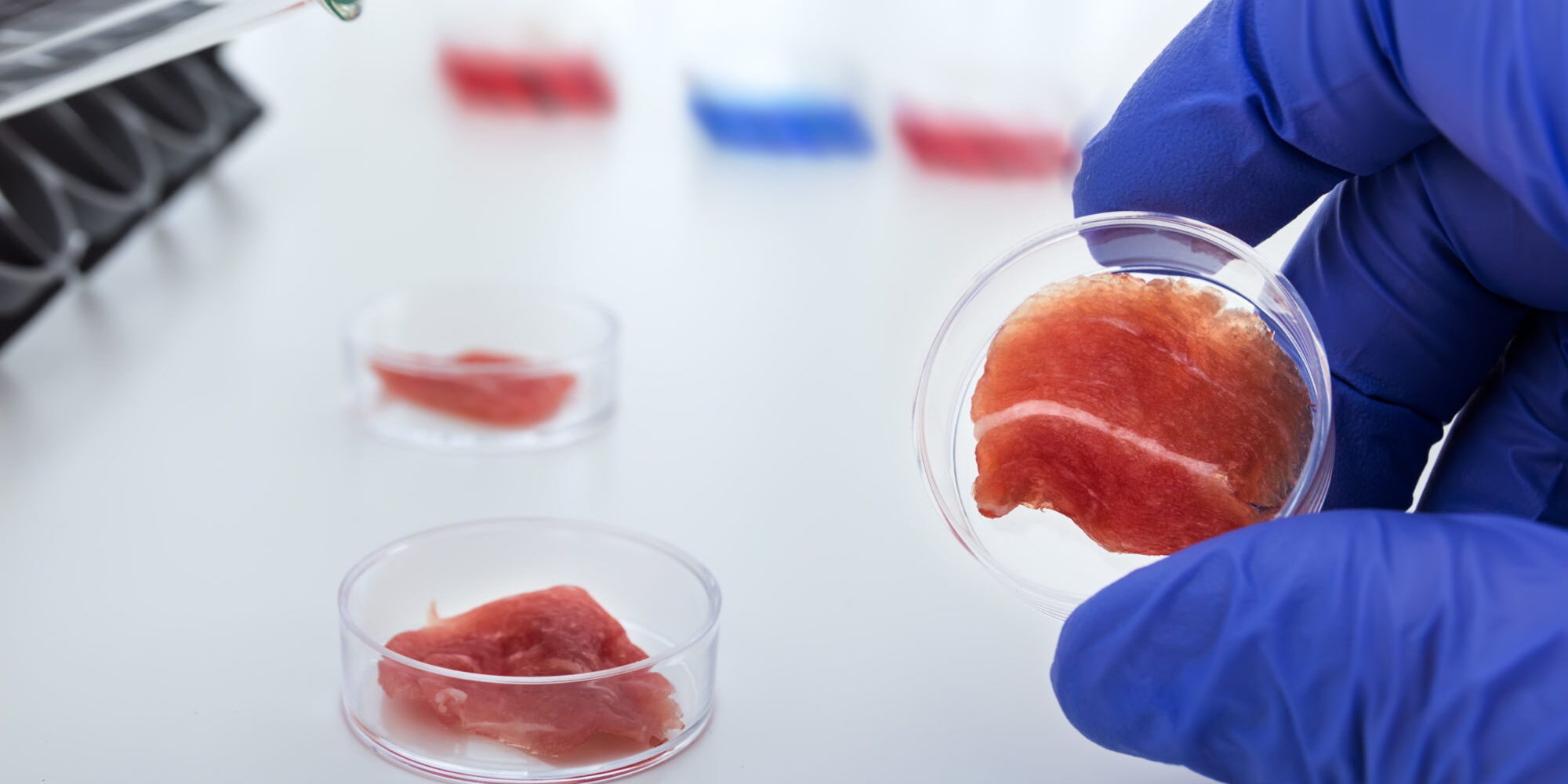
Artificial meat as a mirror of society
Author
Published: 18 May 2022
Last updated: 20 May 2022
Share article:
Artificial meat is real meat that is produced artificially in laboratories and bioreactors.
Such products, it is said, will be able to provide future consumers with affordable and satisfactory alternatives to ‘conventional’ meat and alleviate concerns about the meat’s consequences for animal welfare or climate change.
In a decade, the production price of an artificial burger has dropped from €250,000 to around 10. A pilot plant and test restaurant for journalists has opened in Israel, and cultured chicken nuggets have been approved and placed on restaurant menus in Singapore.
Nevertheless, the general consumption of artificial meat still primarily belongs to the imagination, or at least to the future. Access to and the price of input factors is just the beginning; the replacement of ‘conventional’ meat consumption would entail fundamental socio-structural changes in agriculture, with unprecedented ripple effects on the environment, the economy, local communities, and people’s intrinsic relationship to food.
Experts argue about how realistic and desirable this development is, and the environmental, health, ethical and economic issues are many.
Researchers from a number of institutions and disciplines are contributing to the project, “The transition to biosynthetic protein: evaluation of effects, outcomes and opportunities for Norway’s post-animal bioeconomy (Protein 2.0)”. It is led by Ruralis and aims to develop strategies and recommendations adapted to the Norwegian public.
The project is conducting in-depth interviews with actors in the Norwegian food sector, such as leaders in animal husbandry, the fishing industry, the grocery trade, and among several new food producers. The aim is not to assess the credibility (or desirability) of the technology as such, but to hear different views on how today’s industries and players could be affected by such products.
It turns out is that the very idea of artificial meat makes us think about our national food culture, and how we, in Norway, differ from other countries.
The informants have many social explanations for why artificial meat will or will not be well received in Norwegian markets. Artificial meat almost seems to function as a kind of social mirror that can make us compare Norwegian habits, attitudes and interests with those of other nations.
One such area is what characterizes Norwegian consumers. Several informants expressed that Norwegian consumers “are most concerned about price”, but that they also think that ‘naturalness’ is important. This was often contrasted with trends in other countries. Swedish and German consumers, for example, were said to be far more concerned with making sustainable choices.
One informant pointed to the USA and Asia as places where consumers are generally less prone to emphasize ‘naturalness’, but where the CO2 footprint of food products receives a lot of attention.
Norwegian consumers’ corresponding assessments of food products’ environmental consequences, on the other hand, were described as more holistic. They are thought to have a broader understanding of the resource needs and consequences for the landscape entailed by different forms of production.
Another area that was highlighted was Norwegian innovation culture or lack thereof, often in discussions about investment capital and what it means for large companies such as Cargill and Nestlé to show interest and invest large sums in start-up companies around artificial meat.
Meat
High prosperity was often used as an explanation for the inability and unwillingness to innovate and make major investments, of which artificial meat was considered an example.
One informant described himself as “pessimistic on behalf of Norway when it comes to large-scale research and development. We have money to do wonderful things, but we do not dare.” Others said that “no one would start synthetic meat production in Norway” because no investors are found here, and that the lack of investors in Norway is a “socio-structural limitation”.
Structures in Norwegian agriculture and food chains were also seen as distinctive factors that affect receptivity. In particular, the power of purchasing managers in the highly concentrated Norwegian grocery sector was highlighted and compared with the UK and other countries that have a greater mix of grocery providers.
And while a future growth in artificial meat as a real competitor with traditional meat production could conceivably result in meat producers prioritizing higher animal welfare to preserve competitive advantage, there were reports of limited room to make such a turn in Norway.
As one informant said, “the level of animal welfare is consistent across products. Few are particularly worse than the average, and not many are particularly much better. It separates us from countries with higher variation in animal welfare, such as England, the Netherlands and Sweden.”
A fourth dimension that must be mentioned is how the informants envisioned the consequences of artificial meat for Norwegian livestock. Some believed – in partial contrast to the informant above –that if artificial meat makes a huge dent in the consumer market, it would force restructuring in parts of Norwegian meat production in the direction of higher animal welfare. And other countries with limited opportunity to change production in such a direction could experience far more dramatic changes.
In the interviews, a lot of time and energy is spent exploring the informant’s views to bring out complex case and cause understandings. This contrasts with surveys that are better suited to demonstrating degrees of knowledge of or acceptance of a phenomenon. Generalizability is limited.
Nonetheless, artificial meat seems to be a good starting point for national societal comparisons. For a researcher who has done many similar interviews in completely different areas of technology, it is striking how closely related meat seems to be to national peculiarities. Do we need a separate research project on meat nationalism?
This article was published in the column Faglig snakka in Nationen on 16.03.2022.
Author
Published: 18 May 2022
Last updated: 20 May 2022
